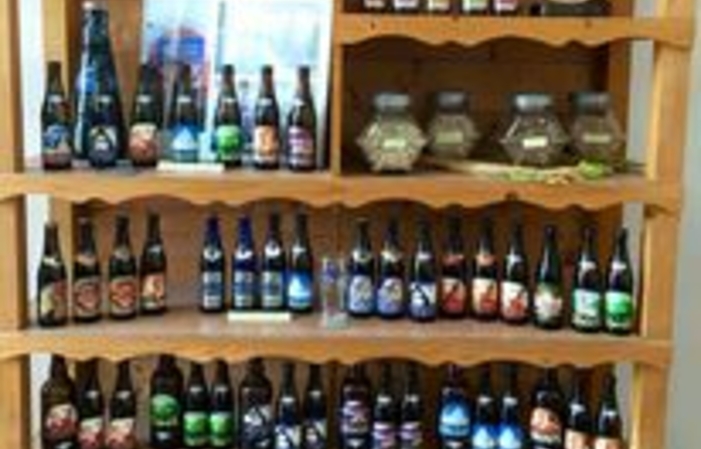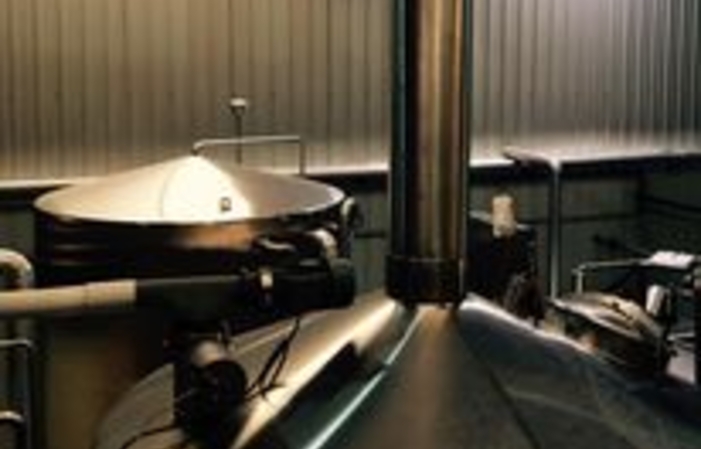Description
The Brasserie des Cimes
is located in the heart of the Alps in Aix-les-Bains. It is in this exceptional environment that our craft beers have been brewed and elaborated since 1998.
We would be delighted to welcome you to make you discover the brewery and its history and the work done to develop our biere!
We look forward to seeing you again at the Brasserie des Cimes
Rules and conditions
The 1€ tours mean that they are made free of charge by the Brasserie. This amount is requested to ensure the seriousness of your request and to avoid the Brewery blocking a visiting slot unnecessarily.
In case of unforeseen events, we kindly ask you to cancel your visit to the platform and/or notify the Brewery directly.
Reservation policy
Cancellation policy: : Strict
Products offered for tasting:

Brasserie des Cimes Professional seller
1 - crushing The malt grains pass through a crusher to obtain a coarse "flour" called musture. Consisting of burst grains and envelopes, musture has two very important roles: - Release the enzymes and... See more
1 - crushing The malt grains pass through a crusher to obtain a coarse "flour" called musture. Consisting of burst grains and envelopes, musture has two very important roles: - Release the enzymes and substrates of the grain that will make it possible to obtain the extract used during fermentation - Optimize the subsequent filtration step by retaining the grain envelope 2 - impasto Crushed grain and hot water are mixed inside the impasto tank to obtain the corn. During this step, the mixture is maintained at a given temperature for some time. This allows the degradation of the protein part of the grain thanks to the action of enzymes initially present in the grain and released at that time. 3 - brewing Once the impasto is over, the brewer will continue the heating by rigorously following several temperature levels to trigger the action of other specific enzymes. The goal is to obtain simple fermentable sugars from the starch brought by the malt. 4 - filtration At the end of brewing the corn is transferred to the filtration tank to separate the liquid part containing the fermentable extract called wort and the solid part composed of the undegraded grain called drêche. The must is then sent to the boiling tank and the drêche evacuated to be revalorized by a local farmer. 5 - boiling Boiling has two main objectives: - Sterilize the must and any spices or aromatics added at this stage. - Evaporate volatile compounds that are not favorable for the taste of beer. It is during boiling that the different hops and spices are added to bring the notes of bitterness, spicy or floral sought. 6 - Clarification of the must The wort is sent to a tank called Whirlpool. By a natural phenomenon of centrifugation, non-soluble particles, as well as hop residues, gather in the center of the tank, which makes it possible to remove a clear and limpid juice. 7 - Preparation of the must The clarified wort must now be cooled and then oxygenated to be sent to a fermentation tank. The selected yeast strain is added to the tank before transfer. 8 - Fermentation All the conditions are met to start fermentation. The brewer now lets the yeast work to turn the sugar into alcohol and gas (CO2). The fermentation lasts about a week and stops on its own as soon as all fermentable sugars have been processed. Other aromatic compounds are also produced during fermentation depending on the yeast strain used. The result of this step can then be called beer! 9 - Guard Also called the second phase of fermentation, the guard is simply a colding of the tank that will allow the sedimentation of yeasts, and more importantly, the maturation of beer bringing new aromatic notes. This stage is long and lasts at least three weeks. 10 - Filtration Before packaging, the beer is filtered to remove the yeasts and bring the almost enchanting shine. All our beers are filtered, with the exception of Aiguille Blanche, which in the minds of whites retains its yeasts that largely contribute to its taste and freshness. 11 - Pasteurization To guarantee the stability of our beers and maintain a balanced tasting we choose to pasteurize them with delicacy to safeguard all the organoleptic qualities of our products. 12 - Conditioning You can find our beers in different packaging: Kegs of 16L and 30L (professional), Bottles of 33cL, 75cL, and in jugs of 2L ready to be shared! (Not all of our beers are available in all packages). See less

- ID Card:
- Email:
- Already rent:







